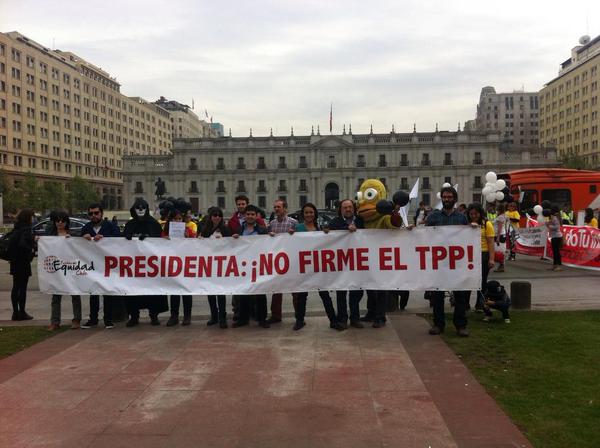Deeper analysis on potential Pacific trade pact: Chile

Farm Futures | 8 September 2016
Deeper analysis on potential Pacific trade pact: Chile
By Gary Baise
Labor Day has passed, and it is time to continue deciphering the Trans Pacific Partnership (TPP). As in the other 30 chapters of the TPP, there are two sections in Annex 2-D setting forth Chile’s position. The first entails Chile’s general notes to the tariff schedule as well as its 291 pages listing present tariff rates and the rates on products when and if TPP ever enters into force of law.
Chile’s general notes section makes several trade commitments, as do other nations’. For example, most nations agree that "Customs duties on originating goods provided for in the items in the staging category [eliminated on entry into force] (EIF) shall be eliminated entirely, and these goods shall be duty free on the date of entry into force of this Agreement for Chile". This language sounds encouraging until you read subsequent paragraphs that Chile has inserted into the agreement.
Two categories indicate that certain goods that fall into "staging category B4" will be eliminated in four years and whatever goods are in this category will be duty free after year four. Another category called B8 incorporates the same scheme and goods would be duty free after eight years.
Another side deal
The agreement is further complicated when Chile indicates that customs duties on products such as wheat will be governed by another side deal. For example, a Chile-Australia free trade agreement consummated in 2008 will govern wheat tariffs. Similarly customs duties on sugar shall be the same as established by the Chile-Australia free trade agreement signed in 2008.
Because category after category appears to be governed by a separate agreement identified but not attached, may be one reason the presidential candidates in 2016 are in opposition to this opaque document. It is interesting that virtually all the prior agreements involve wheat and sugar.
The actual tariff schedule for Chile is 291 pages and spells out the present tariff base rate and then for most of the items shows that on year one, the agreement is entered into, tariffs go to zero.
For example, in the category of Live Animals, the tariff base rate is presently 6%. The category covers live horses, mules, purebred breeding animals, live bovine, sheep, goats and poultry. For turkeys, however, a Canadian importer would have to pay a tariff of 5.2% the first year and in year eight, the tariff would be zero. The turkey producers of Canada appear to be singled out by this agreement.
There are entire categories of products such as tuna, sardines, tilapia, turbot, and tens of other fish products where an existing 6% tariff is reduced to zero.
Milk and cream which is concentrated or contains added sugar or sweetening matter, interestingly goes from a 6% tariff to 5.2% tariff in the first year. Each year the tariff is reduced through year eight when it becomes zero.
The list goes on and on
On page 27 there is an incredibly detailed listing of various milk products. A certain tariff will be applied if milk has a "fat content exceeding 1.5% but not exceeding a 6% by weight." The list goes on and on and if the milk has a fat content of 26% or more the tariff is 5.2% and eventually reduces to zero in year 8. Then the tariff schedule lists other products such as fresh unripen or uncured cheese that will come in with a zero tariff imposed. Mozzarella cheese is treated differently. Presently a 6% base rate is imposed and when this cheese comes in from countries such as Australia, Japan, Mexico and the United States there will be a 5.2% tariff and eventually reaching zero in year 8.
The tariff schedules, as noted, are mind numbing but instructive. As stated earlier, the trend appears to be the reduction of tariffs on products exported into Chile.
The section on wheat is indecipherable. On page 46 wheat has a 6% tariff imposed and the words "plus specific duty" added. Then in the remarks column on wheat there appears to be a different treatment for each country and then in years1 to 8, a separate side agreement appears to govern. Presumably the experts at U.S. Wheat Associates could more fully answer the questions raised on pages 46, 47 and 48. The agreement is so specific it deals with soft red winter wheat "containing humid gluten higher or equal to 30% by weight." According to the agreement there is an agreement separately with each country for the importation of wheat.
Six percent appears to be the base rate imposed on thousands of products exported to Chile. A review of the tariff schedule appears to eliminate virtually all of these tariffs by year eight.





